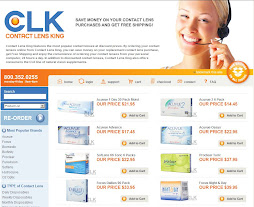Recently there has been a flurry of news postings on the Internet and elsewhere about the number of emergency room visits (approximately 17,000 by some estimates) from children and teens related to their wearing of contact lenses. This leads to the question, “Are contacts safe for children?”
The short answer is yes, as recent studies* have concluded that children as young as eight can be successfully introduced to contact lens wear. Certainly their desire for them will continue—especially when issues of self-esteem, sports participation, and comfortable vision correction are ever present. However, there are some things to keep in mind.
The common reasons for these visits are preventable infections, eye abrasions, and conjunctivitis (‘pink-eye’) caused most often by the failure to adhere to required wearing and replacement schedules. One must always remember that contacts are regulated medical devices that must be prescribed and properly fitted by an eye doctor. Contacts are also subject to strict wear time and cleaning regimens that are to be followed diligently. The lens cases in which contacts are stored should be changed once a month. Use only prescribed cleaning solutions. Carry out all instructions from your eye doctor and maintain regularly scheduled visits to monitor eye health.
Whether or not a child or teen is ready for contact lenses is not based solely on their years, but also on their ability to handle the responsibility that comes with wearing them. Parents are the best judges of their children’s sense of responsibility and this judgment is an important deciding factor when it comes to pairing kids with contacts. Once this pairing occurs, parents should not step away from supporting and reinforcing good wearing habits beyond their child’s initial training. Also key is setting a positive example when parents are lens wearers themselves. When these concerns are successfully hurdled, any problems that could threaten eye health are minimized.
Ongoing advances in technology will also continue to make contact lens wear a healthy practice, an example being the development of daily disposables that provide an easy once-a-day use—eliminating the need for a daunting cleaning regimen.
Having a child that wears contact lenses need not be a worrisome endeavor, especially when proper levels of diligence and responsibility are applied to ensure a safe and satisfactory experience with their lenses.
*The Contact Lenses in Pediatrics (CLIP) and Pediatric Refractive Error Profile (PREP) are two examples.
Subscribe to:
Post Comments (Atom)





No comments:
Post a Comment